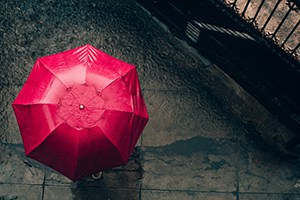 In a previous blog post, we talked about some of the risk factors of slip-and-fall accidents in the workplace. Each year, thousands of employees are injured from slip-and-fall accidents. And while most of these are minor, resulting only in bruises, others are more severe and may lead to broken bones.
In a previous blog post, we talked about some of the risk factors of slip-and-fall accidents in the workplace. Each year, thousands of employees are injured from slip-and-fall accidents. And while most of these are minor, resulting only in bruises, others are more severe and may lead to broken bones.
Whether you work in an office setting or industrial factory, you should take the necessary precautions to reduce the chance of slip-and-fall accidents. Unfortunately, many companies overlook the effect of rain and bad weather in the workplace. Here, we’re going to look at the direct link between weather and slip-and-fall accidents, while revealing steps companies can take to reduce the chance of accidents.
If your workplace features hardwood, laminate or concrete floors, even small amounts of water may create a serious hazard for slip-and-fall accidents. It only takes a quarter cup of water to saturate an area that’s 3-feet wide. The already slick floor surface is made even more dangerous when it’s wet, creating a serious danger for employees. A worker can lose their balance and fall to ground in a split second while walking on a slick surface.
Companies spend millions of dollars each year in direct and indirect costs associated with slip-and-fall accidents. These include obvious costs, such as medical bills and lost wages, along with more obscure costs like lawsuits, OSHA fines, reduced productivity, broken equipment, resources to train new employees, etc. Some companies assume that workplace accidents only cost them in the form of worker’s compensation, but this isn’t the case. As you can see, companies end up paying for accidents in several different ways, which is why it’s important to reduce the number of slip-and-fall accidents in your workplace.
Weather-Related Elements That Contribute To Slip-And-Fall Accidents:
- Rain
- Snow/sleet
- Hail
- Ice/frost
- Wet leaves and debris
Note: don’t assume that your workplace is safe from weather-related slip-and-fall accidents just because it’s covered. Employees can easily track water and moisture into the workplace on their shoes and clothes.
How To Reduce The Chance of Weather-Related Slip-And-Fall Accidents
So, how can companies reduce the chance of weather-related slip-and-fall accidents in the workplace? For starters, it’s important to keep the parking lot and exterior clean and free of debris. This includes the removal of snow, ice and leaves.
Companies can also place absorbent mats in ‘problematic’ areas to help soak up some of the excess moisture that makes its way into the workplace. For example, in access points like main building entrances.
Lastly, stair treads are another great way to help prevent slip-and-fall accidents in high traffic areas like external stairwells.
 Have questions about slip-and-fall prevention products for your workplace? Contact Travis Zdrazil at travis@absorbentsonline.com or (800) 869-9633.
Have questions about slip-and-fall prevention products for your workplace? Contact Travis Zdrazil at travis@absorbentsonline.com or (800) 869-9633.